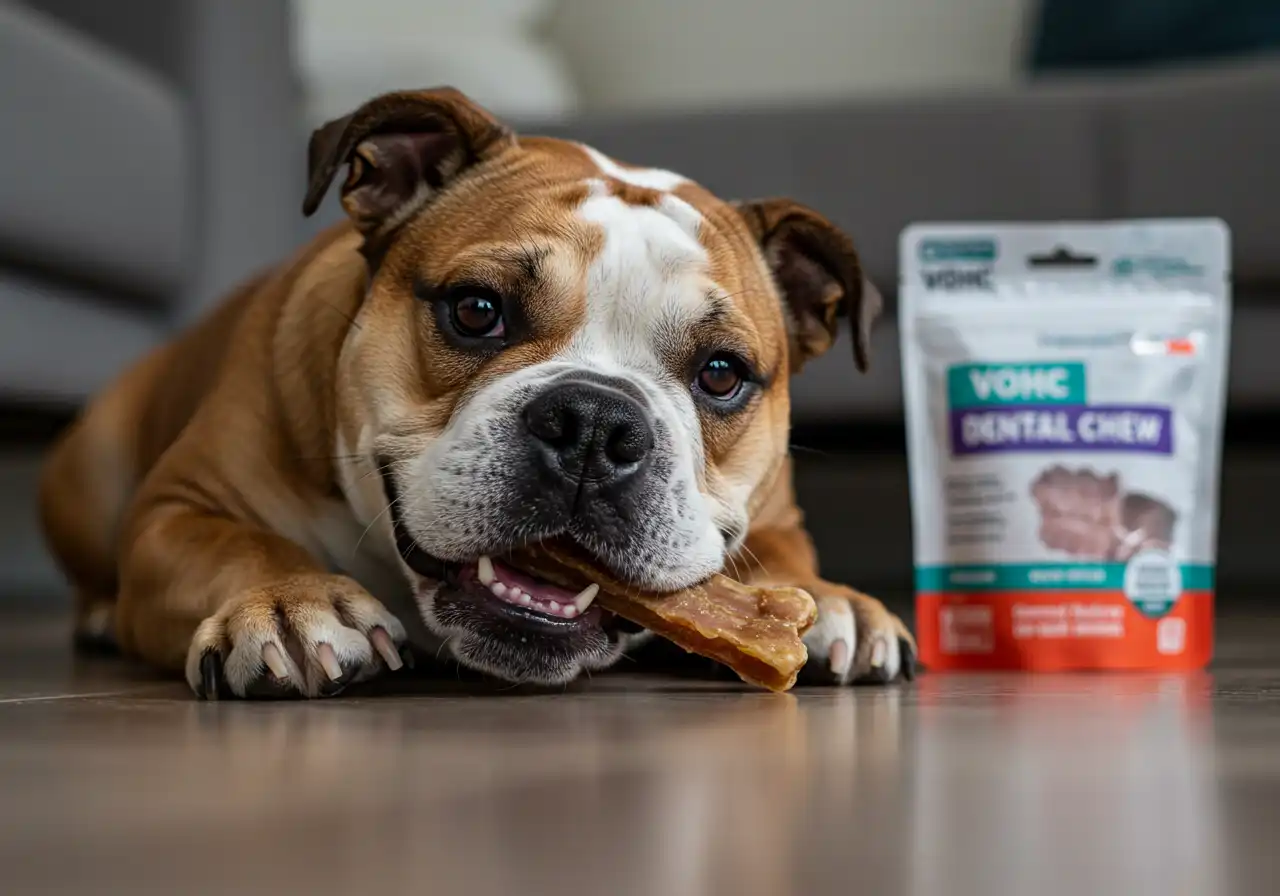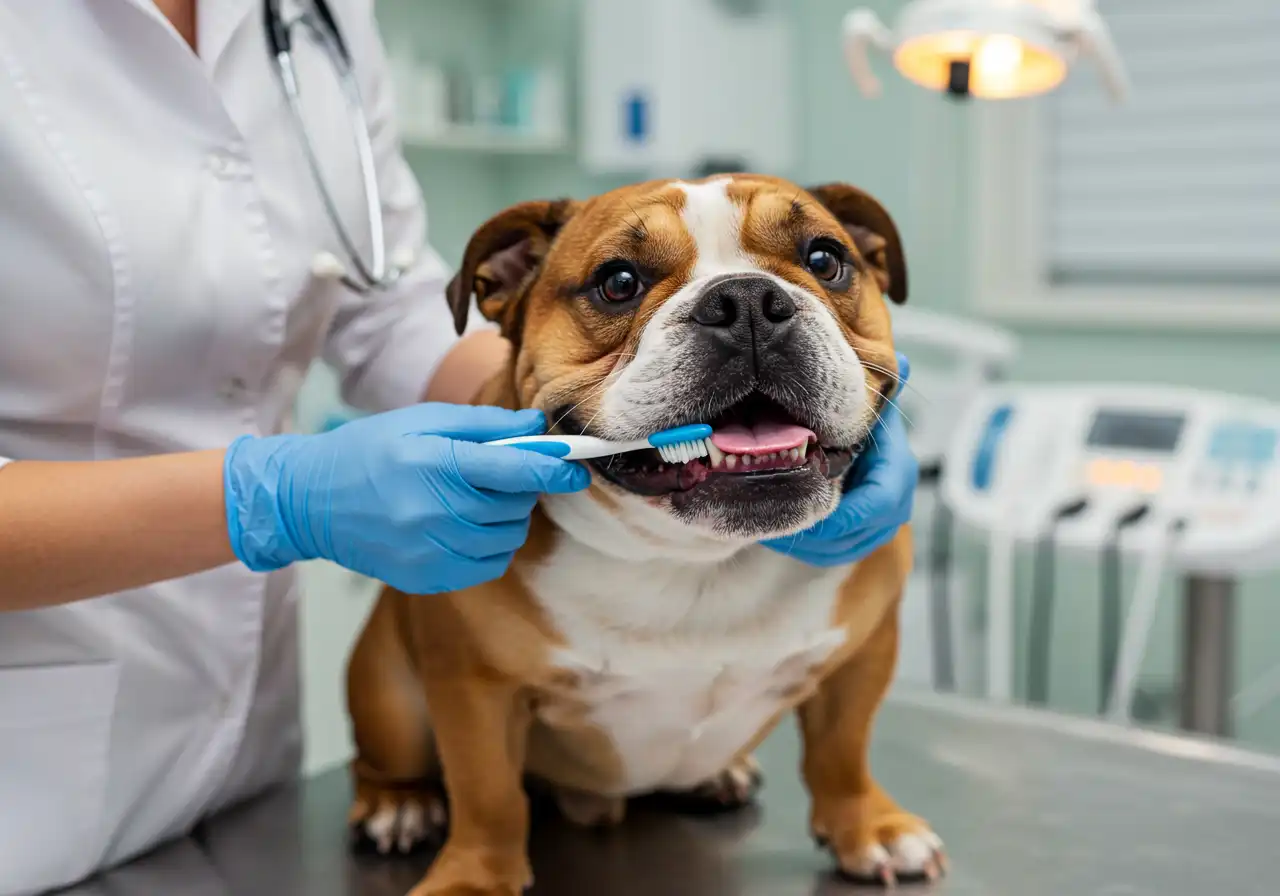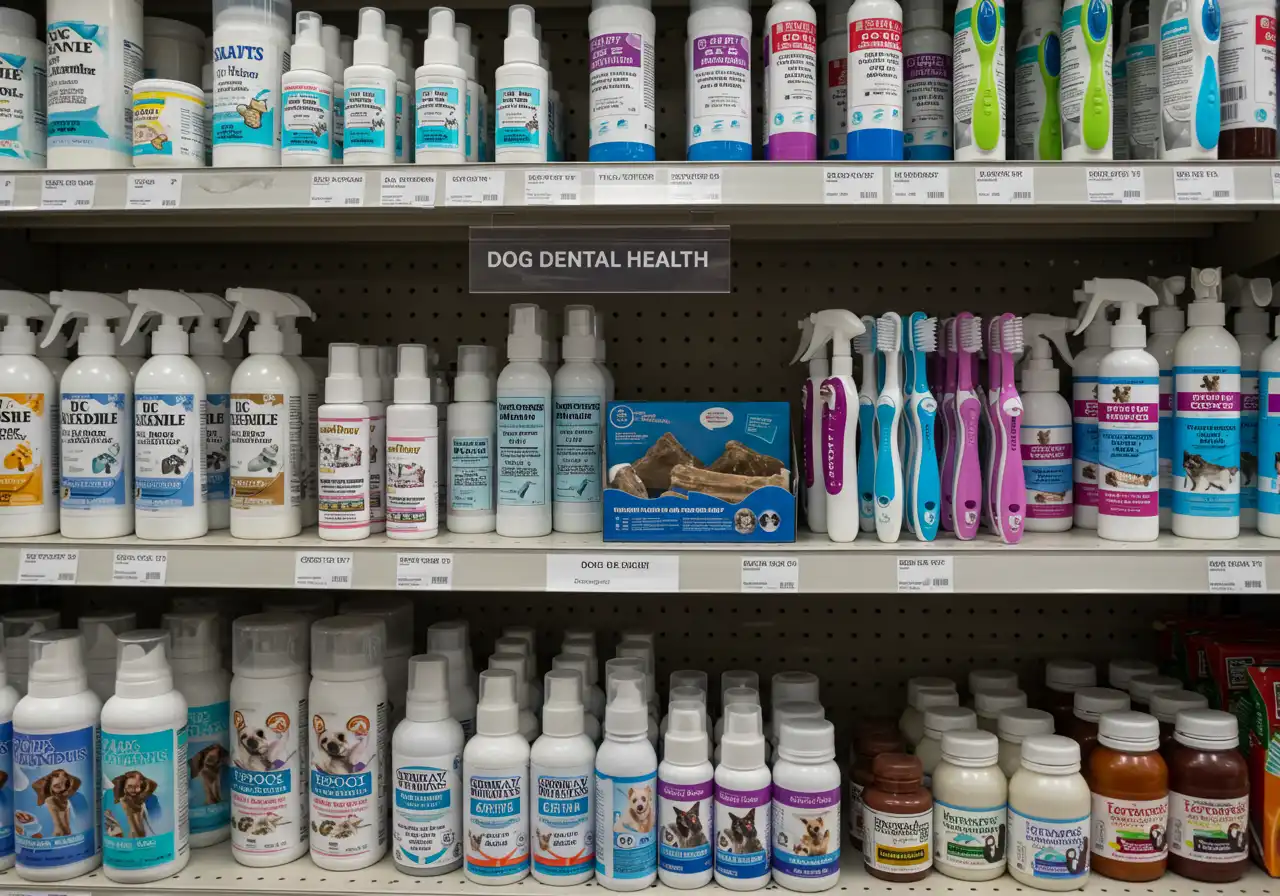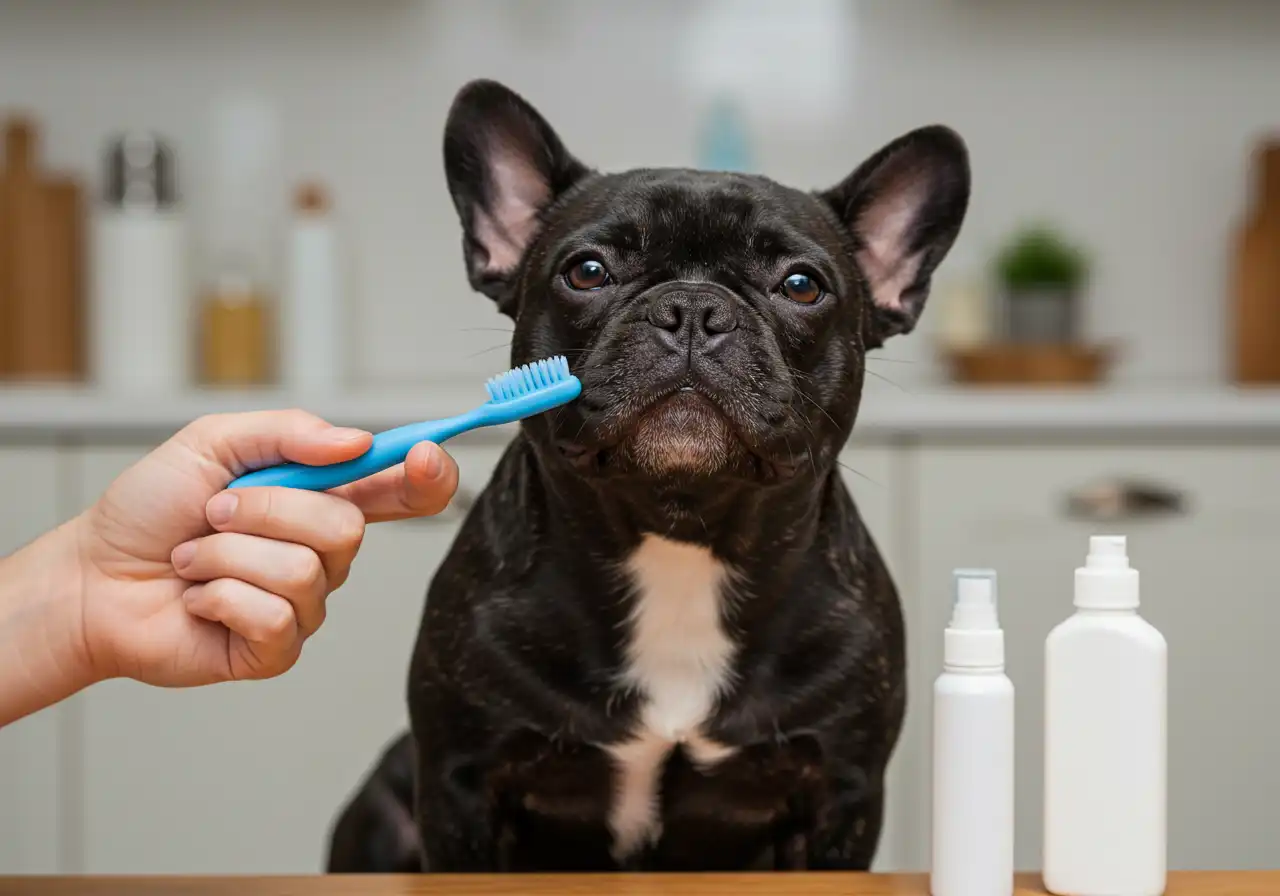Bulldogs (including Continental, English, French, etc.) are beloved for their distinctive faces — but that same facial structure can create unique dental challenges. In recent years, veterinary research, pet health markets, and new oral care technologies have advanced rapidly. In this article, we’ll dive into the latest research, emerging trends, and products that are reshaping how bulldog owners care for their dogs’ teeth.
Why Bulldog Dental Health Is Especially Important
Before we go into trends, it helps to understand why bulldogs often face more oral health risks than average dogs:
- Brachycephalic jaw structure: Bulldogs have short muzzles, often undershot bites or crowded teeth, making full cleaning more difficult.
- Early onset periodontal disease: Many flat-faced breeds develop gum disease, tooth loss, or dental pockets at younger ages. :
- Restricted mouth opening and cheek folds: These can trap food particles, bacteria, and moisture, increasing risk of decay or gingivitis.
- Risk of systemic effects: Dental disease is linked to other health problems (heart, kidney) in dogs. Good oral care can improve overall wellness.
Given those challenges, bulldog owners must be more proactive and informed about the best practices and tools available.
Market & Trend Overview: Dental Care as a Fast-Growing Segment
The pet dental health sector is rapidly expanding. Some key data points:
- The global **pet dental health market** is projected to grow from ~USD 6.5 billion in 2024 to ~USD 9.4 billion by 2029.
- Growth is driven by increasing owner awareness, “pet humanization,” and demand for preventive care rather than reactive treatments.
- Innovations like enzymatic toothpaste, microbiome-friendly products, smart monitoring, and natural formulations are gaining traction.
- Dogs hold the largest share of the pet dental market, reflecting the focus on canine oral health.
In short: more pet owners are investing in dental care, new products are appearing, and veterinary dentistry is evolving. Bulldogs, as a higher-risk group, stand to benefit significantly from these innovations.
Recent Research & Clinical Findings
Here are some of the more important studies, reports, and findings relevant to bulldog dental health:
High Prevalence of Early Periodontal Pockets
One guide reports that **82% of French Bulldogs under 3 years old** already have periodontal pockets deeper than 3 mm, a sign of early jawbone loss. :contentReference[oaicite:6]{index=6} While that’s about French Bulldogs, it’s a cautionary insight that flat-faced breeds tend to suffer early. For bulldogs in general, similar tendencies have been observed.
The “Brachycephalic Conundrum” in Oral Health
A review article named “The Brachycephalic Conundrum” discusses how short muzzles, crowded teeth, and abnormal angles increase plaque accumulation, make cleaning harder, and accelerate gingival recession. The article emphasizes that routine cleaning must be adapted—tools, techniques, and scheduling all matter more for bulldogs.
Oral Microbiome & Enzymatic Approaches
Recent product R&D and veterinary interest have shifted toward formulations that support a healthy oral microbiome. Instead of just abrasive cleaning, new toothpaste and rinses may use enzymes, probiotics, or antimicrobial agents to manage bacterial balance. :contentReference[oaicite:9]{index=9} Some brands now label their products as microbiome-friendly or “enzyme-boosted.”
Preventive Care vs. Treatment Costs
Data from veterinary markets indicates that dental services (cleaning, extractions) constitute a significant portion of pet health revenue. That means preventive care (brushing, chews, rinses) is not only healthier for dogs — it’s more cost-efficient for owners in the long run.
Key Trends in Products & Innovation
Here’s what’s trending in bulldog oral care products (and pet dental care overall):
Enzymatic & Microbiome-Supporting Toothpaste
Rather than relying solely on abrasives, many toothpaste brands now use dual enzymes (e.g. glucose oxidase, lactoperoxidase) to control plaque-forming bacteria naturally. These formulations tend to be gentler — important for sensitive bulldog gums.

Dental Chews with VOHC Acceptance
VOHC (Veterinary Oral Health Council) approval has become a more critical benchmark. Pet owners increasingly look for chews that carry VOHC seals as a sign of efficacy. Bulldogs often respond better to chews than brushing alone, especially when sensitivity or reluctance is an issue.
Water Additives, Sprays & Powders
To complement brushing or for days when brushing isn’t feasible, water additives, oral sprays, or dry powders have gained popularity. These are designed to reduce bacteria, freshen breath, and decrease plaque buildup with minimal effort.
Smart & Tech-Enabled Dental Tools
Though still emerging, some manufacturers are exploring **smart toothbrushes or sensors** that monitor brushing frequency, pressure, and coverage. In the broader oral health field, smartphone-based imaging (e.g. apps that help detect gum disease) is being researched. Though these are not yet mainstream for pets, they hint where pet dental care may move next.
Natural & Hypoallergenic Ingredients
As pet owners demand cleaner formulations, more products highlight natural ingredients, fewer additives, and hypoallergenic formulas. Some brands market with “no artificial colors, flavors, or preservatives” claims.

Practical Care Strategies for Bulldogs
Trends are useful, but your daily routine matters most. Here’s a bulldog-tailored plan:
1. Start Brushing Early & Regularly
Ideally, begin when your bulldog is a puppy. Use a soft, angled toothbrush or finger brush. Focus on the outside surfaces (where plaque is heaviest). Aim for daily, but even 3–4 times per week is significantly beneficial.
2. Choose the Right Products
- Pick enzymatic toothpaste designed for dogs (no fluoride or foaming agents).
- Use a toothbrush sized for brachycephalic breeds, with soft bristles and angled head.
- Include VOHC-approved dental chews (for example, Greenies or Virbac C.E.T. chews) as supplemental cleaning.
- Use water additives or oral sprays on off days, but don’t rely on them solely.
3. Monitor & Log Oral Health
Take monthly photos of your bulldog’s teeth and gums. Track changes in gum color, tartar buildup, and behavior (e.g. difficulty eating). Some canine dental apps or general image tools may assist in identifying changes over time.
4. Regular Veterinary Checkups & Cleanings
At least annually, schedule a professional dental exam and cleaning (often under anesthesia). Your vet may also recommend X-rays to check below the gumline. If signs of gum disease or tooth root issues appear, intervene early.
5. Diet & Chew Management
Feed kibble or food that supports dental health (e.g. some diets are formulated specifically to reduce plaque). Also, supervise chew time to avoid fractures (especially with hard chews) or choking. Remove chews once they’re broken down or small.
6. Manage Behavior & Stress During Dental Care
Some bulldogs resist brushing. Use positive reinforcement, do short sessions, reward generously, and build trust. Over time, many dogs accept the routine.

Top Products & Tools Worth Considering
While every dog is different, here are examples of trending tools and product categories (you’ll want to check availability and suitability for your bulldog):
- VOHC-approved dental chews (e.g. Greenies, Virbac C.E.T., etc.)
- Soft, angled dog toothbrushes or finger brushes
- Enzymatic canine toothpaste (no fluoride) with natural ingredients
- Water additives, oral sprays, or dental powders
- Smart or sensor-enabled toothbrush devices (emerging category)
- Dental kits / bundles oriented toward brachycephalic breeds
- Special bulldog dental health bundles (e.g. “Plaqueless Vital Care Bundle” tailored for bulldogs)
Always check with your veterinarian before introducing a new product, especially for dogs with existing dental disease or sensitivities.
Challenges & Common Pitfalls
Even with the best tools, bulldog oral care can be tricky. Here are pitfalls to watch out for:
- Overuse of hard chews: Too-hard bones or chews can fracture teeth, particularly in older dogs.
- Skipping undergumline care: Much plaque forms under gums; regular cleanings and exams are essential.
- Neglecting behavior resistance: Forcing brushing abruptly may cause dental trauma or fear. Build routines gradually.
- Relying solely on chews / additives: They help, but they don’t replace brushing and professional care.
- Poor product selection: Using human toothpaste, abrasive pastes, or non-approved chews can harm gums or enamel.
Conclusion & Action Plan
Dental health in bulldogs is not optional — it’s a critical part of care. Especially given their structural challenges, bulldog owners must lean into prevention, monitoring, and using the best available tools and trends. The good news: the market is evolving rapidly, and new innovations (enzymatic formulations, microbiome support, smart tools) offer more effective and user-friendly options.
Suggested action plan summary:
- Assess your bulldog’s current oral health (check gums, smell, chewing behavior).
- Select a gentle toothbrush and enzymatic toothpaste and begin a brushing routine (daily if possible, or 3–4× weekly).
- Add VOHC-approved dental chews or complementary additives for off days.
- Log monthly photos and observations to track changes or issues.
- Schedule professional veterinary dental exams and cleanings at least annually.
- Stay aware of new products or tools and discuss them with your vet before use.

